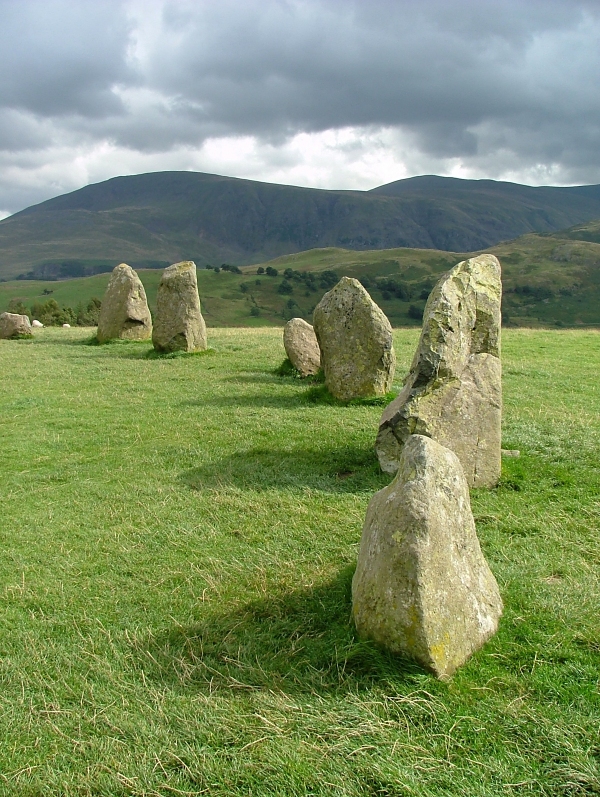
My interest in the medieval history of Scotland and England traces back to a movie, the title of which I can't recall, on television after my bedtime at age eight.
It was the Vietnam era; my father was a Navy pilot and was flying transport in and out of the war zone at the time. Earlier in the day, my mother received a phone call reporting that a fellow pilot, who completed flight school with my father and subsequently became a very good friend of his, had been shot down in a rice paddy. I had never heard of Howard Rutledge at that time (he spent nine years as a prisoner of war and later wrote a book entitled In The Presence of Mine Enemies) and pictured a rice paddy as something to eat. It didn't sound very appealing.
I was young and didn't really understand the tension that filled the house that day. So there I sat alone in a darkened room, the images flickering on the screen, long after I should have been in bed.
Armored men, castles, the surrounding countryside, the bagpipes – all viewed and heard for the first time aroused my imagination, sent me off on flights of fancy, but even at such a young age, always with realism: I was never the princess in the tower, nor in the clutches of an evil sorcerer; there was no slain dragon littering my doorstep. The movie brought to light an inborn connection, an abiding passion to learn about where and how these people lived, how they communicated, how they viewed their world.
I dreamed of visiting the UK someday. The sights and sounds – the accoutrements – that defined England and Scotland fascinated me, mesmerized me. Tapestries, Celtic music, knotwork, illuminations, stained glass, folk songs, rolling green hills shrouded in mist – I couldn't get enough of them. Being the pragmatic sort though, I never believed that my dream could become reality. It was too far away, it cost too much, there was reality to contend with ... and after all, dreams are just dreams.
Embracing my dreams by writing historical fiction, I sent myself back in time through my characters. Research stimulated the imagination, but it also evoked a desire that was so intense that I cannot put words to it. Being born a Wallace, and the success of the historically incorrect (though highly entertaining) movie Braveheart didn't help matters. I longed to be there. I needed to see, touch, smell.
Somehow this place that I had only heard of, of which I'd only seen pictures, was my place in this world. It was the home in which I'd never lived, but longed to return to.
I mapped out a virtual trip, an itinerary of where I would go, what I would see. The places were obscure, off the beaten track. No cities, mostly ruins. There weren't many, really – I wanted to touch Hadrian's Wall, walk along the banks of the Tweed near Peebles, visit Inchmahome Priory on Lake Menteith, feel the wind in my face blowing off of Loch Leven in Fife, stand amid the refuge stones at Torphichen Preceptory in Lothian among a few others.
I can't exactly pinpoint when I began to consider that I might be able to turn my dream of visiting Scotland and England into reality – it was definitely sometime after I became an AOL member and met so many people online who encouraged me not to give up. One person, who indirectly inspired me, spoke of her dream to visit Paris one day. She said that due to her poor health, it was too late for her. I realized that if I did nothing, one day I may be saying those same words to someone else.
I began reading the travel boards on AOL, the "trip reports" submitted by other members on their return that told of their travels and experiences. A spark glimmered. Here were people who turned dreams into reality. What was I afraid of? Incurring debt? If I did it now, I reasoned with myself, I'd have years to pay it off.

The stone circle at Castlerigg is situated near Keswick in Cumbria, North West England. One of around 1,300 stone circles in the British Isles and Brittany, it was constructed as a part of a megalithic tradition that lasted from 3,300 to 900 BC, during the Late Neolithic and Early Bronze Ages.
Various archaeologists have commented positively on the beauty and romance of the Castlerigg ring and its natural environment. In his study of the stone circles of Cumbria, archaeologist John Waterhouse commented that the site was "one of the most visually impressive prehistoric monuments in Britain."
Read more about Castlerigg Stone Circle at Wikipedia.